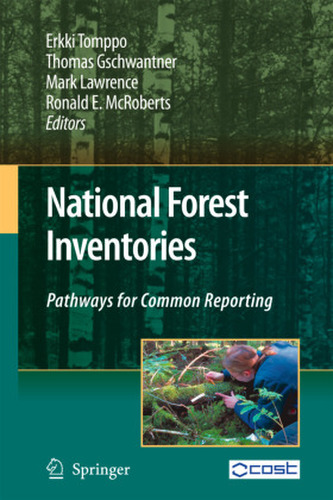Preface.- Acknowledgements.- List of Abbreviations.- 1. Introduction. 1.1 History of NFIs. 1.2 Uses of NFI data. 1.2.1 The use of NFI for national forestry and environment planning and policy. 1.2.2 The use of NFI data for international reporting. 1.3 Harmonising forest resource information. 1.4 Objectives and overview of COST Action E43. 1.4.1 Structure and detailed objectives of COST Action E4. 1.4.2 Participating countries and institutions. 1.4.3 The approach taken. 1.4.4 The primary benefits of COST Action E4. 1.5 COST Action E43 contributions and the structure of the book. References; E. Tomppo et al. - 2. Comparison of National Forest Inventories. 2.1 Introduction. 2.2 Diversity in definitions. 2.2.1 Forest area. 2.2.2 Growing stock volume. 2.3 Diversity of sampling designs. 2.4 Diversity of sample plot configurations. 2.5 Diversity of increment and drain. 2.6 Error estimation. 2.7 Use of COST Action E43 reference definitions in country NFIs. 2.8 Discussion. References; M. Lawrence et al. - 3. National Forest Inventories: Prospects for Harmonised International Reporting. 3.1 Introduction. 3.2 Standardisation or harmonisation. 3.3 Constructing reference definitions. 3.4 Constructing bridges. 3.4.1 An expansive bridge for forest area. 3.4.2 A neutral bridge for forest type classification in Italy. 3.4.3 An expansive bridge for above-ground biomass. 3.4.4 A reductive bridge for forest structural diversity. 3.5 Summary. References; R.E. McRoberts et al. - 4. Summary of Accomplishments. 4.1 Introduction. 4.2 Reference definitions and the comparability of definitions. 4.3 Bridges for converting estimates. 4.4 National forest inventories and harmonisation of reporting. 4.4.1 Harmonised forest resources reporting. 4.4.2 Harmonised greenhouse gas reporting. 4.4.3 Harmonised biodiversity reporting. 4.5 Knowledge sharing to support future work. References; E. Tomppo et al. - National Forest Inventories Reports. 1. Austria. 1.1 Development of the Austrian National Forest Inventory. 1.2 The use and users of the results. 1.3 Current estimates. 1.4 Sampling design. 1.5 Estimation techniques. 1.6 Options for estimates based on reference definitions. 1.7 Current and future prospects. References; T. Gschwantner et al .- 2. Belgium (Walloon Region). 2.1 Development of the regional forest inventory (RFI) in Wallonia. 2.2 The use and users of the results. 2.3 Current estimates. 2.4 Sampling design. 2.5 Estimation techniques and data processing. 2.6 Options for estimates based on reference definitions. 2.7 Current and future prospects. 2.8 Cost Action E43 and its influence on RFI. References; J. Rondeux et al .- 3. Brazil. 3.1 Development of the national forest inventory of Brazil. 3.2 The uses and users of the results. 3.3 Methodological framework. 3.4 NFI associated programs. 3.5 Institutional framework and strategies for implementation. 3.6 Future prospects. References; J. Freitas et al .- 4. Canada. 4.1 Development of Canada\'s National Forest Inventory. 4.2 The uses and users of the results. 4.3 Design of Canada\'s National Forest Inventory. 4.4 Estimation techniques. 4.5 Governance. 4.6 Future prospects. References; M.D.Gillis et al .- 5. China. 5.1 Development of China\'s National Forest Inventory. 5.2 The use and users of the results. 5.3 Current estimates. 5.4 Sampling design. 5.5 Estimation techniques. 5.6 Options for estimates based on reference definitions. 5.7 Current and future prospective. References; X. Lei et al .- 6. Croatia. 6.1 Introduction. 6.2 History of Forest Inventory in Croatia. 6.3 Development of the Croatian National Forest Inventory. 6.4 Sampling design. 6.5 Estimation techniques. 6.6 Data management and reporting. References; M. Vedris et al .- 7. Cyprus. 7.1 Development of forest inventories in Cyprus. 7.2 The use and the users of the results. 7.3 Current estimates. 7.4 Sampling design. References; L. Loizou .- 8. Czech Republic. 8.1 Development of the Czech National Forest Inventory. 8.2 The use and users of t
\n ukryj opis- Wydawnictwo: Springer Netherlands
- Kod:
- Rok wydania: 2014
- Język: Angielski
- Oprawa: Miękka
- Liczba stron: 612
- Szerokość opakowania: 15.5 cm
- Wysokość opakowania: 23.5 cm


 Kontakt
Kontakt
 Konto
Konto














Recenzja